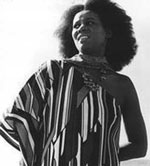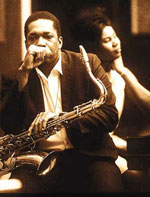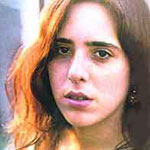
A very young and prodigiously gifted Roddy Frame sang: “So here we go, digging through those dustbins, giving things new names”. And some people do feel the urge to give everything a label don’t they? But the best ones slip eternally under the net.
Maybe it’s not as much fun as Lily Allen’s debut or as great as ESG’s or Urban Tribe’s return, but one of the records that livened up the summer of 2006 was Boxcutter’s Oneiric, which troubled some people because it was really neither one thing or another, but it was great nevertheless. And it was great to see Boxcutter exposed as an enthusiastic young electronic expeditionary, making connections back to cultural signifiers like Jess Franco’s Venus In Furs and Pharoah Sanders’ Tauhid. And his contemporary in the bass continuum Kode9 is pictured in Plan B, as part of an infectious article on dubstep by Melissa Bradshaw, wearing a Miles Davis On The Corner t-shirt.
All of a sudden it’s ten years earlier, drum and bass is dominating music for the forward thinking, and star of the scene Photek’s Rupert Parkes is making those connections to cosmic jazz, and Omni Trio’s Rob Haigh is talking excitedly about the electric Miles. Omni Trio incidentally bequeathed us two of the best titles ever in 'Haunted Science' and 'Renegade Snares', while for Photek the tide would turn again in his favour with the advent of dubstep, and all of a sudden the explorations of Parkes almost serve as a blueprint for another great leap forward.
The late ‘90s was a good time for discovering the more cosmic jazz, or what Archie Shepp called the fire music. I first picked up Pharoah Sanders’ Tauhid through the recommendation of Stereolab’s Tim Gane, and around the same time Impulse! had started a salvage series, making available a whole swathe of titles by the likes of Sanders, Shepp, Sun Ra, and especially Alice Coltrane. It helped hugely that the reissues were couched exquisitely in digipak editions

It’s hard to remember where I first heard Alice Coltrane. The name naturally had mystic connections through the association with her late husband, and her involvement in his most out there recordings, like Expression. Replacing the respected McCoy Tyner on keyboards must have been a huge challenge for Alice, regardless of the support of ‘Trane. Even among progressive jazz circles, it would not have been easy for a woman to win over hearts and minds, and indeed in her great work on the jazz avant garde As Serious As Your Life Val Wilmer struggles to name that many major female figures beyond Alice and Linda Sharrock.
In Viv Goldman’s similarly great book, The Black Chord, she describes Abbey Lincoln making the bold transition from appearing as a sultry saloon singer in The Girl Can’t Help It, setting the screen alight, to her astonishing contribution a few years later, setting the streets alight, on her partner Max Roach’s We Insist! Freedom Now Suite, where she provides the revelatory strident voice singing words like Oscar Brown’s 'Driva’ Man' and 'Freedom Day'. The following year in 1961 she would construct the gloriously confrontational set, Straight Ahead, and consequently would not be invited to make another record for many years, beyond a contribution to Max Roach’s choral experiment It’s Time, which set the road for Donald Byrd’s A New Perspective.
At the risk of sounding like Jonathan Richman singing about Harpo Marx, the use of harps within popular music in its loosest sense can be a special thing. A brilliant case in point is Dorothy Ashby’s Afro-Harping, where Cadet arranger Richard Evans (of Soulful Strings’ Burning Spear infamy) merges the jazz harp with electric exotic pop arrangements, such as the spectacular dancefloor filler Soul Vibrations. It may be stretching a point to include John Sebastian playing the autoharp on the Lovin’ Spoonful’s 'Do You Believe In Magic?' But then pop is meant to be about stretching points.
It was John Coltrane himself who encouraged Alice to take up the harp, and we must acknowledge his vision. For there are few things within the musical sphere as magical as Alice playing her harp. One needs only hear a selection of the records she went on to make after John’s death to understand the beauty, grace and spirituality she brings to jazz and beyond. Impulse! too needs to credited with foresight for providing the space and freedom to make exploratory titles like Ptah, The El Daoud, Journey Into Satchidananda, and Universal Consciousness, records that are among my most cherished, and sets that feature some of the most vital of contributions from adventurers like Pharoah Sanders, Joe Henderson, Ornette Coleman, and Rashied Ali.

Alice Coltrane’s developing deep spirituality would sustain through a further series of equally essential recordings for Warners, including Eternity, Transcendence, and Transfiguration, which again when salvaged would appeal enormously to a new audience whose way of hearing had been shaped by records by the likes of Tortoise and DJ Shadow, and maybe more so by the free associations such acts had suggested.
As an occasional contributor to other people’s records, Alice Coltrane further enriched music. She is there on Joe Henderson’s astonishing Elements, and McCoy Tyner’s equally remarkable Extensions. She can be heard too on the Rascals’ Peaceful World (where thinking about it I probably did hear Alice for the first time) and Laura Nyro’s Christmas and the Beads of Sweat.
It still seems so appropriate that Alice appears on a Laura Nyro record, because they have so much in common essentially in terms of stubborness and contrariness and vision and giftedness. And so Alice appears on Map To The Treasure, and treasure it really is. For just as Alice struggled to be understood in the jazz world, so in the pop world in which she was so steeped Laura fought against hostility, and stupid prejudice that looked down on her love of street corner doo wop and pure populist soul. Though ironically Laura’s greatest hit, also from Christmas and the Beads of Sweat, was a cover of 'Up On The Roof'.
Times change, and time changes everything, and right now I’m left in a quandary about whether I really need a set of Laura Nyro pin badges. Objects of desire they may be, and pop ephemera they surely are, but would I wear one? And do they do Alice Coltrane ones?
© 2006 John Carney